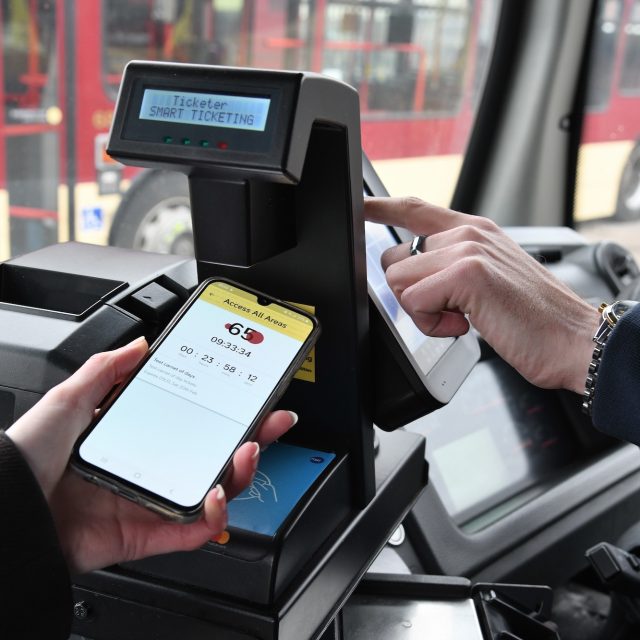When you think about the future, what do you imagine?
The film, ‘Back to The Future’ promised hoverboards by 2015 and Busted sang that by the year 3,000, we’d all be living underwater! The reality is much tamer. We order groceries without ever having to set foot in a shop and meet colleagues without ever having to commute to an office. So it makes sense that public transport would also undergo change.
It would be easy to assume that the tech-savvy millennial generation would manage with ease; after all, we’re ‘natives’. We grew up with computers, smartphones, and the internet. But the digitisation of transport, in particular, has brought its own set of challenges, leaving even the computer literate scratching their heads.
I remember the first time I was allowed to catch a bus to the next town over, with a group of friends, to indulge in spending our pocket money in Claire’s Accessories. The return fare for the trip was £2.50, a small price for the cost of my freedom at thirteen years old. I paid in cash, with no app or contactless card in sight. That’s a stark contrast to travelling today. When I board the bus, there is not one, but two payment points and a slightly disgruntled driver who doesn’t feel like pulling out an instruction manual for me. He advises “you can use an app.”
One would think that a smartphone equipped with an app store would solve all your transport tribulations. The truth is, while there’s an app for almost everything, managing multiple transportation apps can become a labyrinth of confusion. Ride-sharing apps, public transport apps, bike-sharing apps, scooter-sharing apps – the list goes on. Navigating the sheer number of platforms, each with its own user interface and quirks, can turn the simple act of getting from A to B into a digital treasure hunt.
And what happens when you need to plan a multi-modal journey? Integrating different forms of transport – say, combining a train ride with a bike-sharing service – can quickly escalate into a technological headache. Coordinating different apps, payment systems, and schedules can make even the savviest of users throw their phones up in frustration.
Not all millennials are created equal in the digital realm. While many are adept at using digital interfaces, there’s a significant proportion that’s less comfortable. This discrepancy can create a digital divide even within that generation. The assumption that all millennials are tech wizards overlooks those who might face challenges due to visual impairments, cognitive issues, or a lack of exposure to digital devices.
Transportation apps are in a perpetual state of flux. Updates roll out, features change, and suddenly the familiar interface looks completely different. For those who may not have the time or inclination to stay up to date with app changes, the learning curve can be steep. What was once a smooth experience could transform overnight into a perplexing ordeal.
As tech-savvy millennials find themselves wrestling with the intricacies of digital transport, it’s a stark reminder of how convoluted this landscape can be. If those who have grown up surrounded by technology are facing such challenges, it’s a humbling realisation that navigating this realm is far from intuitive. If the digital transport puzzle proves baffling for me, and my generation, I can only imagine the bewildering experience an older individual might encounter. The complexities of multiple apps, integrated journeys, and constant updates might leave them feeling like they’ve been dropped into a high-tech maze without a guide.
This intersection of age and technology highlights the importance of creating transport systems that cater to users of all generations, ensuring that digitalisation enhances accessibility and doesn’t inadvertently exclude those who aren’t as digitally fluent.
Jenni Scott
Administrator
